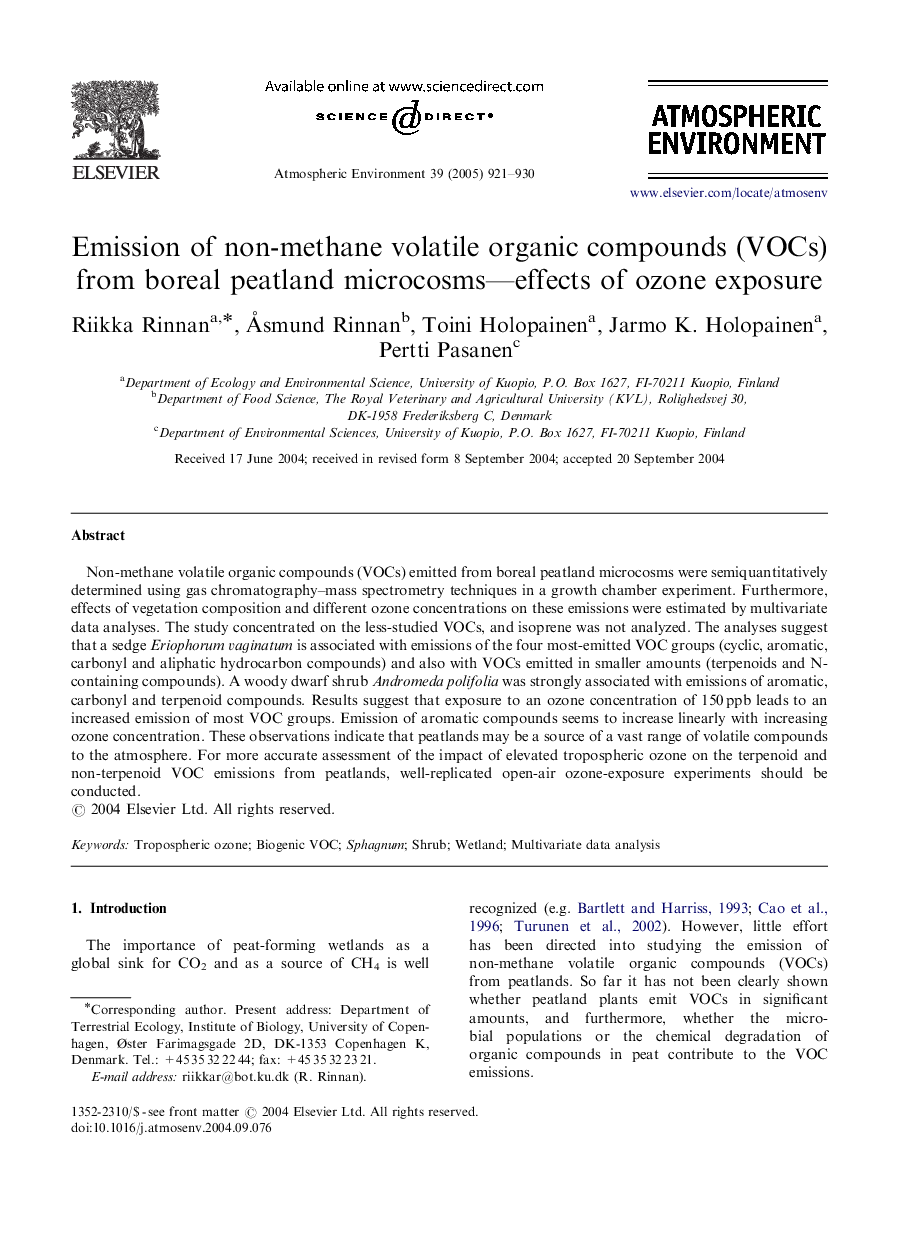| Article ID | Journal | Published Year | Pages | File Type |
|---|---|---|---|---|
| 9458716 | Atmospheric Environment | 2005 | 10 Pages |
Abstract
Non-methane volatile organic compounds (VOCs) emitted from boreal peatland microcosms were semiquantitatively determined using gas chromatography-mass spectrometry techniques in a growth chamber experiment. Furthermore, effects of vegetation composition and different ozone concentrations on these emissions were estimated by multivariate data analyses. The study concentrated on the less-studied VOCs, and isoprene was not analyzed. The analyses suggest that a sedge Eriophorum vaginatum is associated with emissions of the four most-emitted VOC groups (cyclic, aromatic, carbonyl and aliphatic hydrocarbon compounds) and also with VOCs emitted in smaller amounts (terpenoids and N-containing compounds). A woody dwarf shrub Andromeda polifolia was strongly associated with emissions of aromatic, carbonyl and terpenoid compounds. Results suggest that exposure to an ozone concentration of 150Â ppb leads to an increased emission of most VOC groups. Emission of aromatic compounds seems to increase linearly with increasing ozone concentration. These observations indicate that peatlands may be a source of a vast range of volatile compounds to the atmosphere. For more accurate assessment of the impact of elevated tropospheric ozone on the terpenoid and non-terpenoid VOC emissions from peatlands, well-replicated open-air ozone-exposure experiments should be conducted.
Related Topics
Physical Sciences and Engineering
Earth and Planetary Sciences
Atmospheric Science
Authors
Riikka Rinnan, Ã
smund Rinnan, Toini Holopainen, Jarmo K. Holopainen, Pertti Pasanen,
